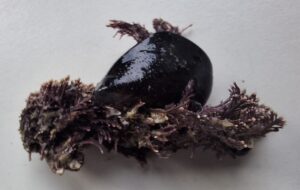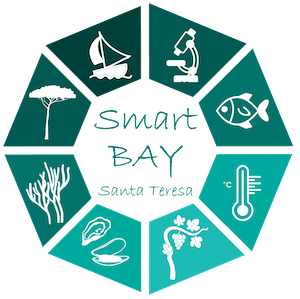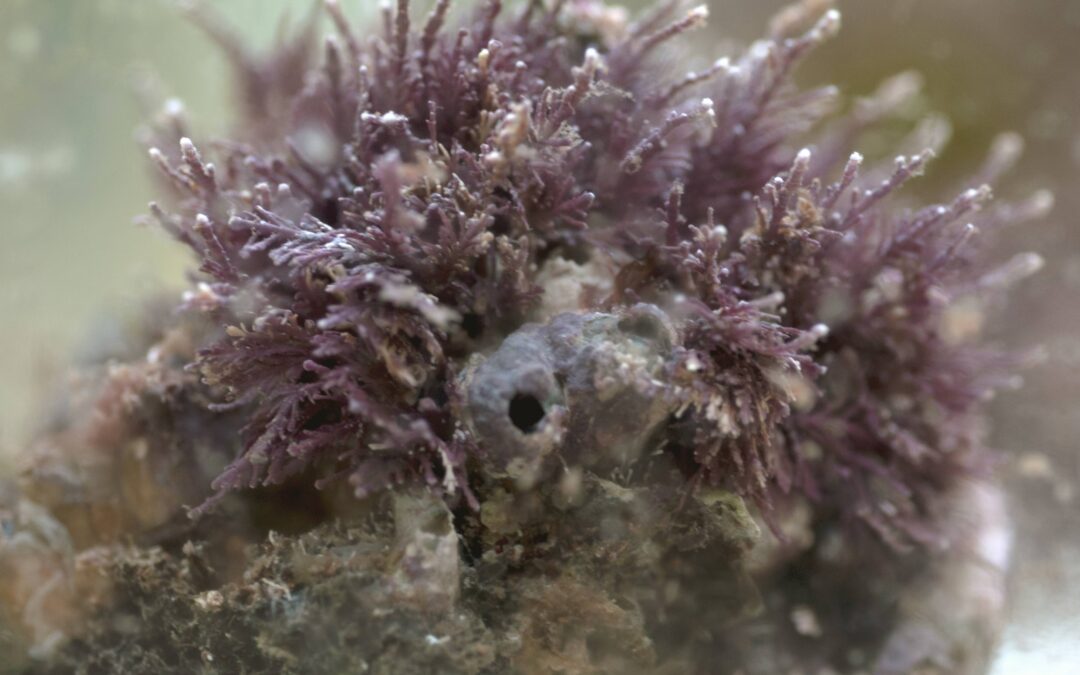Ellisolandia elongata is a red alga (Rhodophyta) that, as all plants, terrestrial and marine, do photosynthesis, that is, produces oxygen by capturing carbon dioxide (CO2) from the sea. Being a coral alga, it is also able to deposit calcium carbonate (CaCO3) in its cell walls through calcification, giving its fronds a ‘coral’ appearance (figure 1) that guarantees good resistance to wave motion and predators. The fronds of E. elongata form ‘bushes’ and the species creates a ‘fringe’ between the 0 and 5 m of depth; these architectures (bioconstructions), completely or partially submerged, contribute in promoting the biodiversity, creating an habitat for a wide range of species, including polychaetes, crustaceans, molluscs and echinoderms, and offering niches for different developmental stages.

Figura 1. Ellisolandia elongata and Mytilus galloprovincialis. Picture: S. Scarpa.
The coralline algae is wide spread in S. Teresa bay, growing on the artificial reef, on the floating pontoon and on natural rocks. Being one of the dominant marine ecosystems of the tidal belt (0-50 cm), therefore in direct contact with the atmosphere, it provides important ecosystem services, including biodiversity promotion and climate regulation. But how much and how does this ecosystem contribute to the absorption and storage of CO2 helping us in the fight against climate change? Smart Bay S. Teresa, in collaboration with the Zoological Station of Naples (F. Ragazzola) and the University of Turin (M. Battuello) is carrying out a pilot study to quantify the metabolic responses (respiration, photosynthesis and calcification) of the ecosystem to E. elongata in environment (figure 2 A,B) to ultimately quantify the capacity of storage of CO2 from the fringe present in the bay.
Figure 2. In situ metabolism study chamber (CISME) during experiments in Santa Teresa Bay. A. Positioning of the ‘brain’ of CISME on the pier; B. ‘Head’ and incubation chamber at the bottom of the bay (1 m) during the measurement phases. Photo: S. Scarpa.
The project, a bachelor thesis by Sara Scarpa (University of Turin), is currently in progress and will allow to obtain preliminary and innovative in situ data on the metabolism of the ecosystem, thanks to the use of CISME owned by ENEA. These preliminary data are necessary for the launch of the long-term monitoring of E. elongata ecosystem to climate change mitigation in S. Teresa Bay.
News by: S. Scarpa, S. Lorenzini, E. Gabrielli

